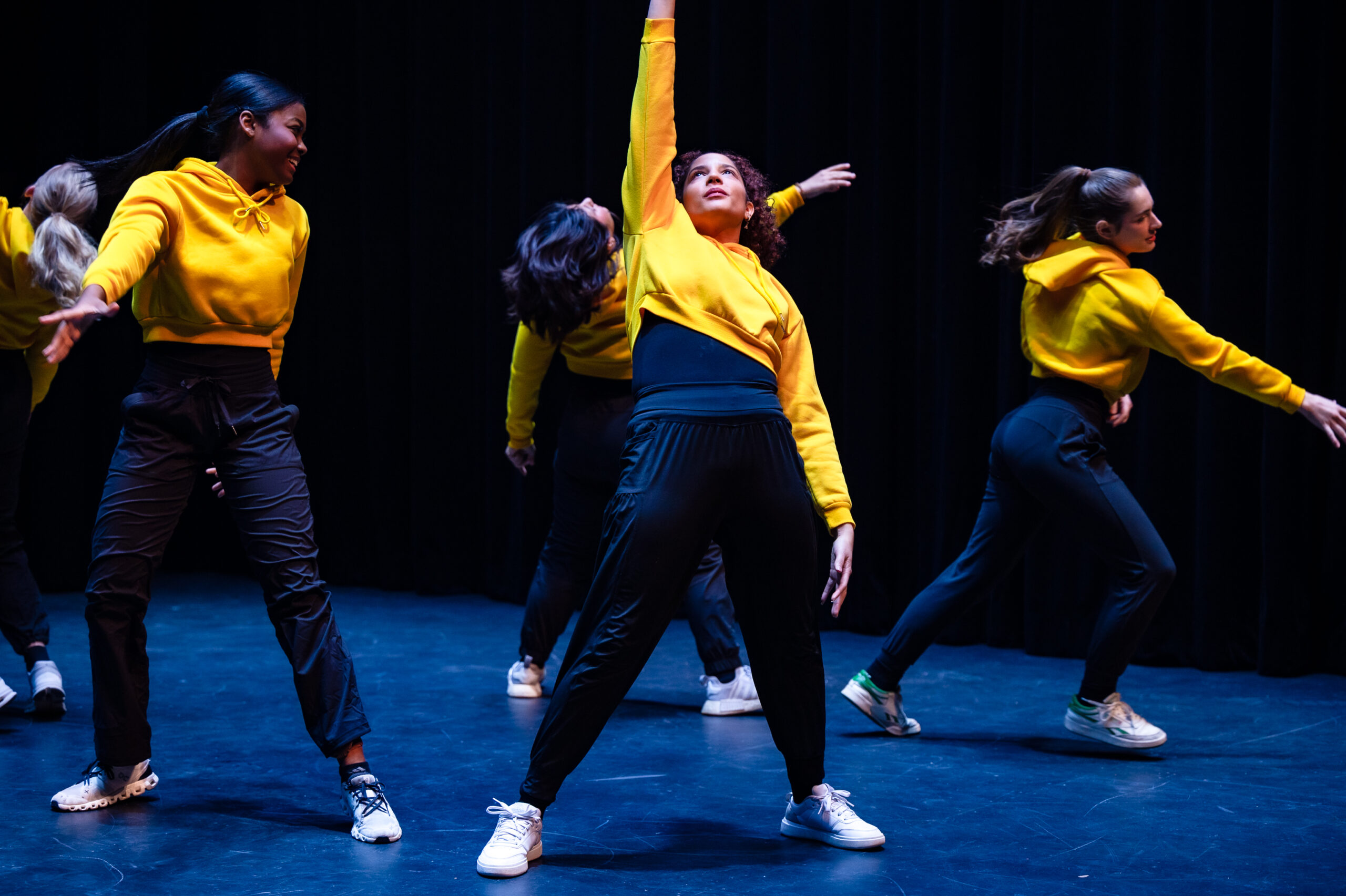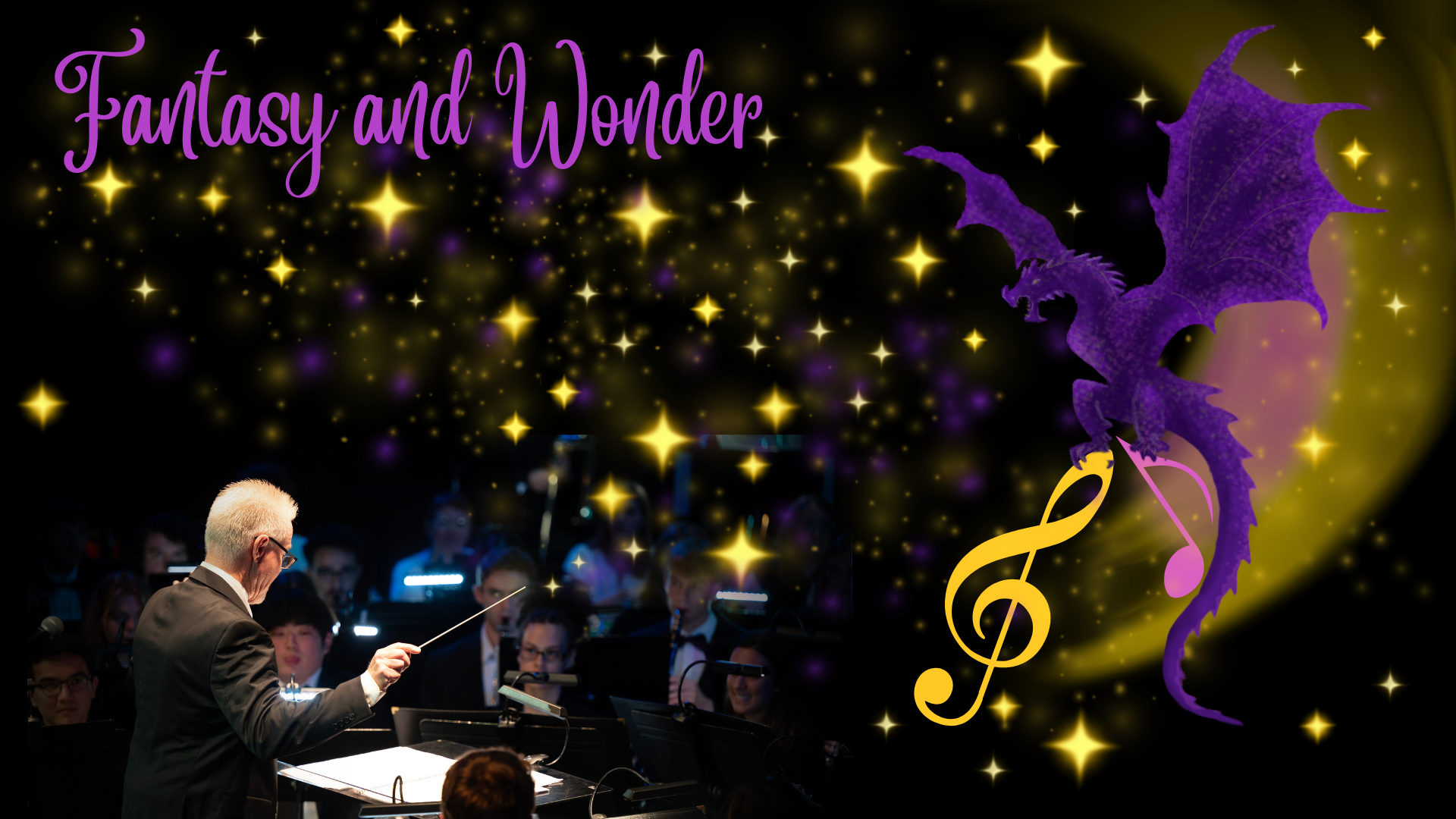NC State Department of
Performing Arts and Technology
presents
Wind Ensemble Fall 2024 Concert
Directed By
Paul Garcia, conductor
Performance Overview
Jump to a specific spot in the program.
PROGRAM
Select each title for more information.
Small ensemble works to be announced from the stage.
The Gum-suckers March
Percy Aldridge Grainger
Ed. R. Mark Rogers
Program notes
According to the composer, “Gum-sucker” is an Australian nick-name for Australians born in Victoria, the home state of the composer. The eucalyptus trees that abound in Victoria are called “gums”, and the young shoots at the bottom of the trunk are called “suckers”; so “gum-sucker” came to mean a young native son of Victoria, just as Ohioans are nick-named “Buck-Eyes”.
In the march, Grainger has used his own “Australian Up-Country-Song” melody, written by him to typify Australia, which he also employed in his “Colonial Song” for two voices and orchestra (root form), or for military band.
Lux Aurumque
Eric Whitacre
Program notes
“Lux Arumque began it’s life as an a cappella choral work that I wrote in the fall of 2000. When the Texas Music Educators Association and a consortium of bands commissioned me to adapt it for symphonic winds, I rewrote the climax and included the grand “Bliss” theme from my opera “Paradise Lost”.
Lux Arumque received it’s premiere at the 2005 conference of the Texas Music Educator’s Association, and is dedicated with deep admiration for my dear friend Gary Green.”
Deciduous
Viet Cuong
Program notes
“For a long time after my father passed away, I felt like I had “lost my leaves”. In the ways that leaves harness light to create energy for trees and plants, I felt like I had so little left to harness creatively. Many days I feared those leaves would never grow back. After struggling for months to write, I finally found some healing while creating Deciduous. This involved revisiting chord progressions that brought me solace as a child and activating them in textures that I have enjoyed exploring as an adult. The piece cycles through these chord progressions, building to a moment where it’s stripped of everything and must find a way to renew itself. While I continue to struggle with this loss, I have come to understand that healing is not as much of a linear process as it is a cyclical journey, where, without fail, every leafless winter is followed by a spring.”
Symphony No. 3 “Slavyanskaya”
Boris Kozhevnikov
Ed. John R. Bourgeois
Program notes
“Slavyanskaya is a fairly conventional Russian-sounding symphony in four movements. The first is at times aggressive and lyrical, opening with a strong F-minor declamation. The second is a slow waltz with an exuberant episode in its coda. A spritely piccolo solo opens the third movement, a rondo which whizzes by at lightning speed. The fourth movement is an exuberant finale. Throughout the symphony, Kozhevnikov uses folk tunes from his native city of Novgorod as the sources of his melodic material. Although Kozhevnikov wrote Slavyanskaya in 1950, it did not receive its first performance in the U.S. until the late 1990s.
The word “Slavyanskaya” (in Russian Славянская) appears to be nothing more than a proper name. It’s also applied to a public square in Moscow, a fancy Radisson hotel also in Moscow, and a Russian brand of vodka.
According to Colonel John Bourgeois, I first came to know of the symphony through my Norwegian friend and band buff, Jan Ericksen, of Norwegian Radio, Olso. At that time, our knowledge of wind music in the USSR was very scant and obtaining information of performance materials was practically nil. However, Jan was and continues to be the master of musical protocol and he circuitously obtained a score and set of parts for me. Later, Jan was the person who was singularly responsible for achieving a state of ‘musical détente’ between the U.S. and the USSR through his Norwegian Radio broadcasts of the Marine Band.”
MEET THE PERFORMERS
NC State Wind Ensemble
Flutes
AJ Magistrado
Rebecca Moore
Ellie Murray
Caitlin Potter
Annamaria Cheek
Horns
Alex Troutman
Catherine Farnham
Trevor Petzold
Erik Svanes
Emily Cox
Jonah Catlin
Trumpets
Owen Forbes
Adah Morton
Joshua Aycock
Eiad Yakout
Nick Novelli
Doug Leavy
James Rhile
Virginia Griffith
Avery Vega
Maggie Gina
Seline Pons
Patrick Alvarado
Trombones
Max Abelson
Zack Powers
Luke Sbityakov
Liam Weiss (Bass)
Euphoniums
Daniel Bailey
Matthew Pearce
Tubas
Rico Abelson
Tyler Smith
Payton Wurst
Luke Ryan
Oboes
Megan Vezzetti
Cameron Kellner
Clarinets
Kyle Hinckley
Jordan Eilers
Jacob Timin
Claire Siegel
Mia Olgine
Sela Bettoli
Pen Hunter
Mitchell Sefton
Faith Richards
Lizzie Rappaport
Emmie Cumby
Bass Clarinets
Drew Guettler
Jake Bramhall
Emily Dodson
E Chapman
Bassoons
Ryan Gibson
Erika Fetvedt
Saxes
Seth Olanovich – Alto 1
Nathaniel Baird – Alto 2
Julia Gale – Alto 2
Jack Fulp – Tenor
Katherine Fowler – Tenor
Matt Cash – Bari
Piano
Elaine Wolochuk
Bass
Henry Henderson
Percussion
Jason Fogelsonger
Vadin Ha
Emma Hamrick
Charlotte Peele
Elizabeth Ingram
Zeiad Yakout
Casey Griffin
Bodey Good
Liam Courtright
MORE FROM THE DEPARTMENT
EXPERIENCE MORE WIND ENSEMBLE
Concert Email Sign-up
- Categories:



